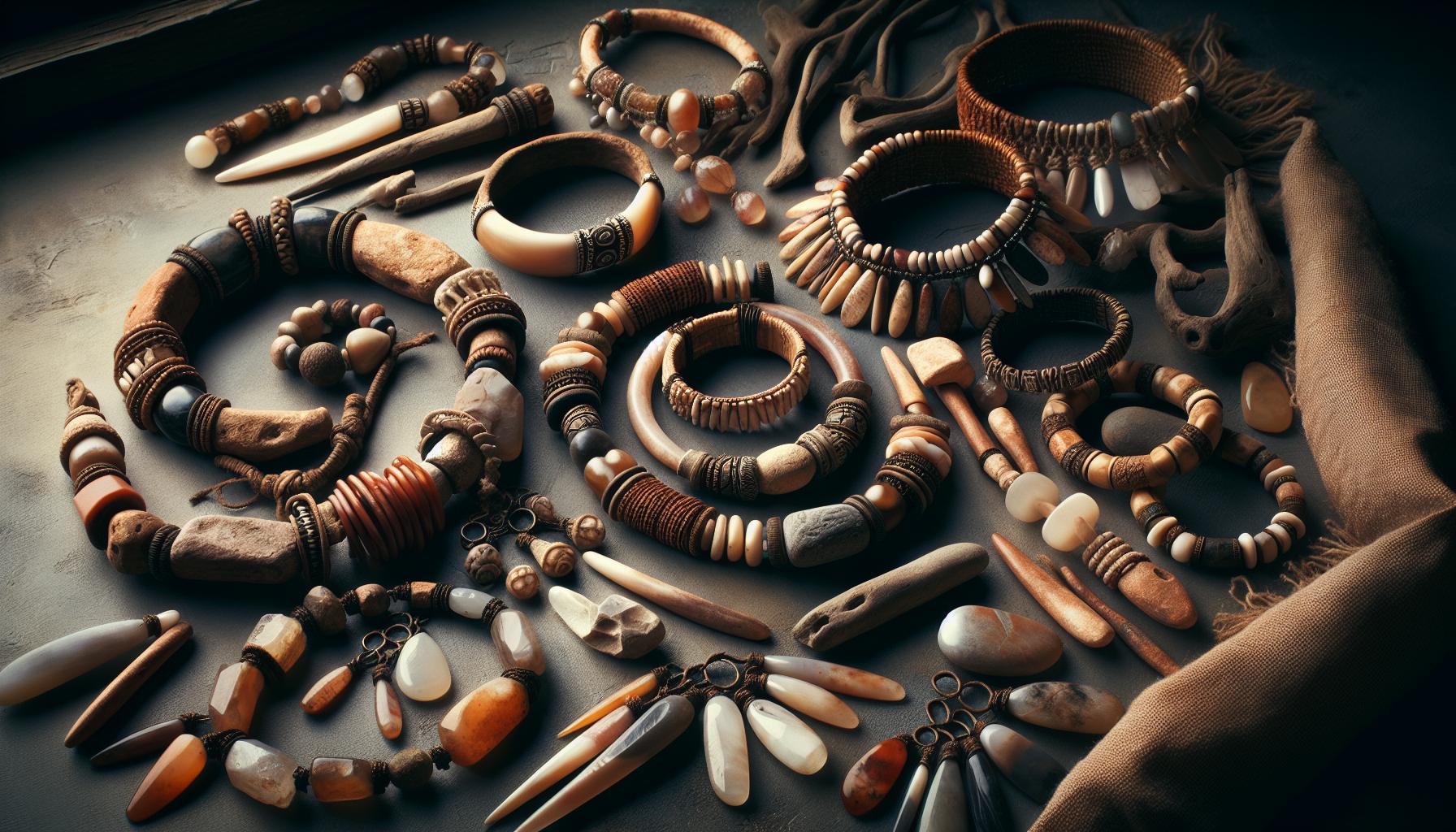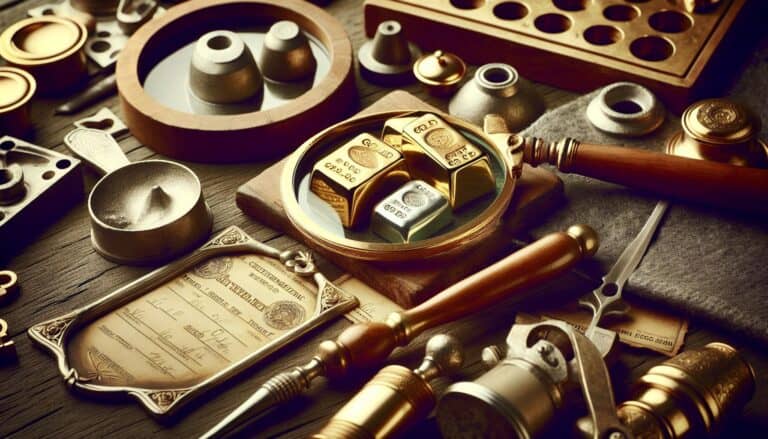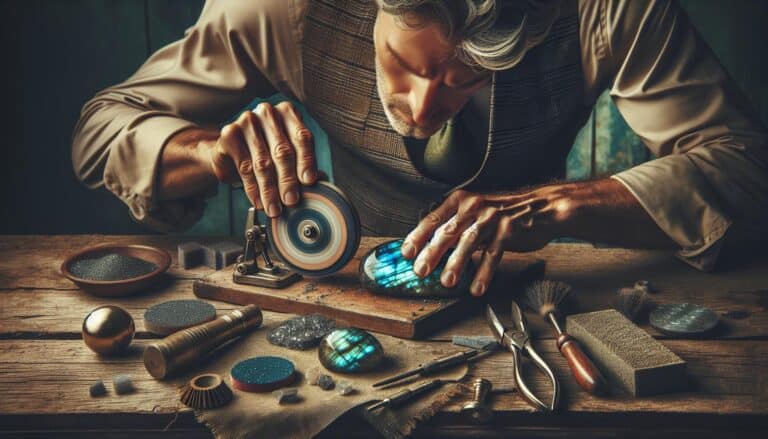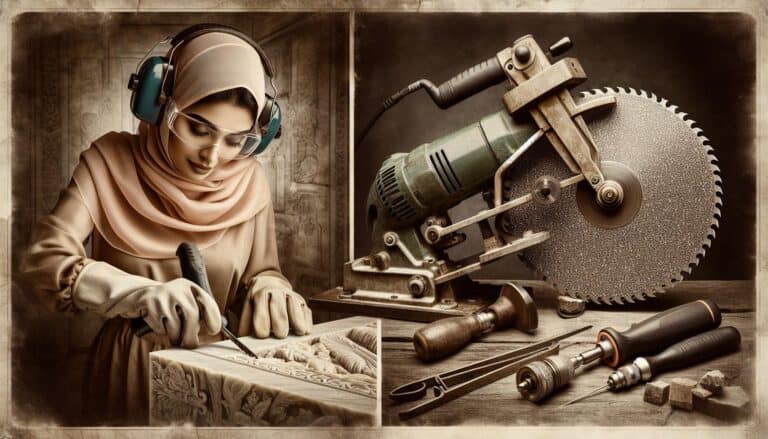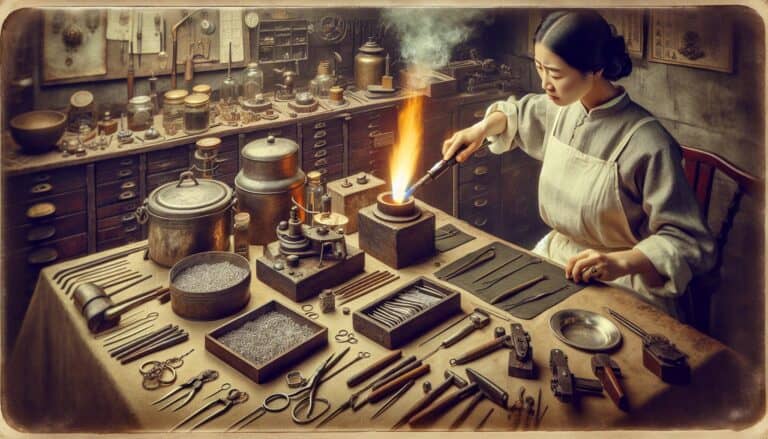Diving into the world of Neolithic jewelry making is like unearthing a treasure trove of ancient creativity and ingenuity. Imagine, over 10,000 years ago, our ancestors were not just hunters and gatherers but also skilled artisans.
Their flair for crafting intricate jewelry pieces from the world around them is nothing short of fascinating.
These early jewelers used materials like bone, stone, and wood, transforming them into stunning adornments. It wasn’t just about decoration; it was a way to express identity, social status, and even beliefs.
As you explore the techniques and materials of Neolithic jewelry making, you’ll find yourself connecting with the past in an unexpectedly personal way.
Neolithic jewelry making, over 10,000 years ago, showcases ancient craftsmanship, utilizing materials like bone, stone, and wood to create intricate adornments. Techniques included drilling, carving, and polishing, reflecting the artisans’ ingenuity. These pieces, beyond decoration, expressed identity, status, and beliefs, connecting us to our ancestors’ rich cultural heritage.
Neolithic Jewelry Making Techniques
When you delve into the realm of Neolithic jewelry making, you’re not just uncovering artifacts; you’re exploring a rich tapestry of ancient techniques that have transcended time. The methods our ancestors used are a testament to their skills and ingenuity. Drilling, carving, and polishing were among the primary techniques employed to turn raw materials into intricate pieces of jewelry.
Drilling was a pivotal technique. With tools made from flint or bone, Neolithic artisans could create small holes in materials, allowing them to string together pieces of bone, stone, or wood. This method was essential for crafting necklaces, bracelets, and other adornments that required assembly of multiple parts.
Carving also played a crucial role. Using sharp tools, craftsmen meticulously shaped materials into desired forms, often inspired by nature or their surroundings. This technique allowed for the creation of symbols and motifs that likely held significant meaning, possibly related to identity, social status, or spiritual beliefs.
Polishing was the final touch that gave Neolithic jewelry its distinctive finish. By rubbing materials against a smoother surface, artisans could achieve a shine that’s still admired today. It’s fascinating to think that the sleek appearance of a piece of Neolithic jewelry was achieved through sheer manual effort and patience.
These techniques, while primitive by today’s standards, underscore a level of sophistication and creativity that shapes our understanding of Neolithic societies. Beyond their functional and aesthetic roles, the jewelry pieces serve as a bridge to our ancestors, offering insights into their daily lives and cultural values. Through exploring Neolithic jewelry making techniques, you’re not just learning about history; you’re connecting with the past on a deeply personal level.
Materials Used in Neolithic Jewelry
In your exploration of Neolithic jewelry making, understanding the materials utilized by our ancestors is crucial. During the Neolithic era, there wasn’t a luxury of modern metals or gems. Instead, natural resources available in their surroundings were ingeniously repurposed into ornamental pieces. These materials included bone, stone, wood, and shell. Let’s delve deeper into how each of these materials played a pivotal role in the crafting of ancient adornments.
Bone and Teeth were often sourced from the animals that Neolithic people hunted for food. These materials were not only abundant but also malleable, making them ideal for detailed carving and shaping. Artisans could easily transform them into beads, pendants, and other decorative items.
Stone was favored for its durability and was used to craft beads, amulets, and even intricate figurines. Certain types of stones, such as soapstone, were particularly prized for their softness and ease of carving. Other stones, like jade, were sought after for their beauty and toughness, indicating a high level of skill in Neolithic craftsmanship.
Wood, although less durable and thus less frequently found in archaeological sites, was also a significant material. Its pliability allowed for the creation of larger items, such as ornamental hairpins or large pendants.
Shells from freshwater and saltwater sources were highly valued as well, especially those that were naturally perforated, which made them easy to string without the need for drilling. The variety in color and size of shells allowed for a diverse range of jewelry designs.
Understanding these materials sheds light on the resourcefulness and creativity of Neolithic people. Their ability to transform basic elements of nature into beautiful objects of adornment speaks volumes about their connection to their environment and their inherent artistic abilities.
Symbolism and Meaning in Neolithic Jewelry
The intricate designs and materials of Neolithic jewelry weren’t chosen randomly. Each piece held significant symbolic meaning and reflected the wearer’s status, beliefs, or connection to their community. For instance, animal teeth and bones used in necklaces might symbolize strength or a successful hunt, hinting at the wearer’s prowess or role as a provider.
Materials also carried particular meanings. Shell jewelry, often found in burials, could imply a connection to water or the afterlife journey, highlighting the Neolithic people’s spiritual beliefs and their reverence for nature. Similarly, wood, despite its perishability, was associated with growth and renewal, making it a powerful symbol for communities rooted in agricultural lifestyles.
Another vital aspect was the geometric patterns engraved or carved into the jewelry. Circles, spirals, and lines weren’t mere decorations; they were symbolic representations of the cosmos, seasons, or cycles of life and death. These patterns underscored the deep connection Neolithic societies had with their environment and the natural world’s rhythms.
The color of the materials also played an essential role in the symbolism of Neolithic jewelry. Colors like red, obtained from ochre, symbolized blood, vitality, and life force, while white, from bones and certain stones, could signify purity and the spiritual world.
- Red: Blood, vitality
- White: Purity, spiritual world
Through its symbolism and meaning, Neolithic jewelry provides invaluable insights into the values, beliefs, and practices of ancient societies, revealing how our ancestors sought to express their identity and views through the art of adornment. By examining these pieces, you gain not only an appreciation for their aesthetic beauty but also an understanding of the complex worldview of Neolithic people and their profound connection to the world around them.
Social Significance of Neolithic Jewelry
Neolithic jewelry wasn’t just about aesthetics; it played a pivotal role in the social fabric of ancient communities. Each piece was more than an ornament; it was a marker of identity, social status, and personal beliefs.
High-status individuals often wore more intricate and rare pieces, showcasing their position within the community. Jewelry made from materials that were hard to come by, such as certain types of shells or gemstones, indicated not only wealth but also connections beyond one’s immediate geographical area. This demonstrated the wearer’s extensive trade networks or their community’s prowess in trading.
On the other hand, the symbolism in the designs and materials could denote a person’s role or profession within the society. For instance, a necklace adorned with animal teeth and bones might not only signify a successful hunt but also mark the wearer as a skilled hunter. Similarly, a piece incorporating certain symbols or patterns could indicate a spiritual role, guiding community rituals and beliefs.
Moreover, Neolithic jewelry also facilitated social bonding. Exchanging jewelry pieces was a way to establish and reinforce social connections and alliances, both within a community and with neighboring groups. These exchanges could mark significant life events, such as births, coming-of-age ceremonies, marriages, or even treaties between tribes.
The practice of crafting and wearing Neolithic jewelry was deeply embedded in the social and cultural landscapes of the time. It was a language of its own, conveying messages about the wearer’s identity, status, and beliefs without the need for words. As you delve deeper into the intricacies of Neolithic jewelry making, you’ll begin to appreciate not only the artistic skill involved but also the profound ways in which these ancient peoples connected with each other and expressed their place in the world.
Connecting with the Past through Neolithic Jewelry
When you delve into the world of Neolithic jewelry making, you’re not just uncovering ancient trinkets but are connecting with the human story that stretches back over 10,000 years. Each piece of jewelry from this era doesn’t just represent an aesthetic choice; it’s a bridge to the thoughts, values, and lives of our ancestors. Through these ornamental artifacts, we gain insights into the daily lives, social structures, and spiritual beliefs of Neolithic communities.
Understanding the craftsmanship behind these pieces offers a fascinating glimpse into the technological and artistic skills of the time. Neolithic people had to source materials from their environment, crafting tools from whatever was at hand, indicating a deep understanding of the natural world. This knowledge wasn’t just practical; it was also deeply spiritual, with each material and design carrying specific symbolic meanings.
Moreover, wearing replicas of Neolithic jewelry today creates a tangible connection to the past. Imagine adorning yourself with a necklace crafted in the same manner and style as those worn by individuals over ten millennia ago. You’re not just accessorizing; you’re embodying a piece of human history, carrying with you the essence of ancient societies.
The Impact of Neolithic Jewelry on Modern Designs is significant. Many contemporary jewelry designers draw inspiration from the forms, materials, and techniques of Neolithic pieces, blending ancient motifs with modern aesthetics. This fusion not only honors our forebears but also ensures that their artistic legacy continues to influence and enrich our lives.
In exploring Neolithic jewelry, you’re engaging with more than just the past; you’re appreciating the continuity of human creativity and the enduring need to express identity, status, and beliefs through personal adornment. These ancient artifacts remind us that the desire to beautify our surroundings and ourselves is a timeless aspect of the human condition.
Conclusion
Delving into the realm of Neolithic jewelry not only enriches your understanding of ancient craftsmanship but also connects you to the profound human urge for expression and identity.
By appreciating the intricate work and symbolic significance of these ancient adornments you’re stepping into a world where art and spirituality intertwine seamlessly. Whether you’re inspired to wear a piece of this timeless art or incorporate its elements into your own creations you’re keeping the legacy of our ancestors vibrantly alive.
Their innovative use of natural materials and the meanings imbued in each piece offer endless inspiration for modern jewelry makers and enthusiasts alike.
So next time you admire a piece of jewelry remember it’s more than an accessory—it’s a link to our collective past a testament to human ingenuity and a reflection of the unending quest for beauty and connection.

